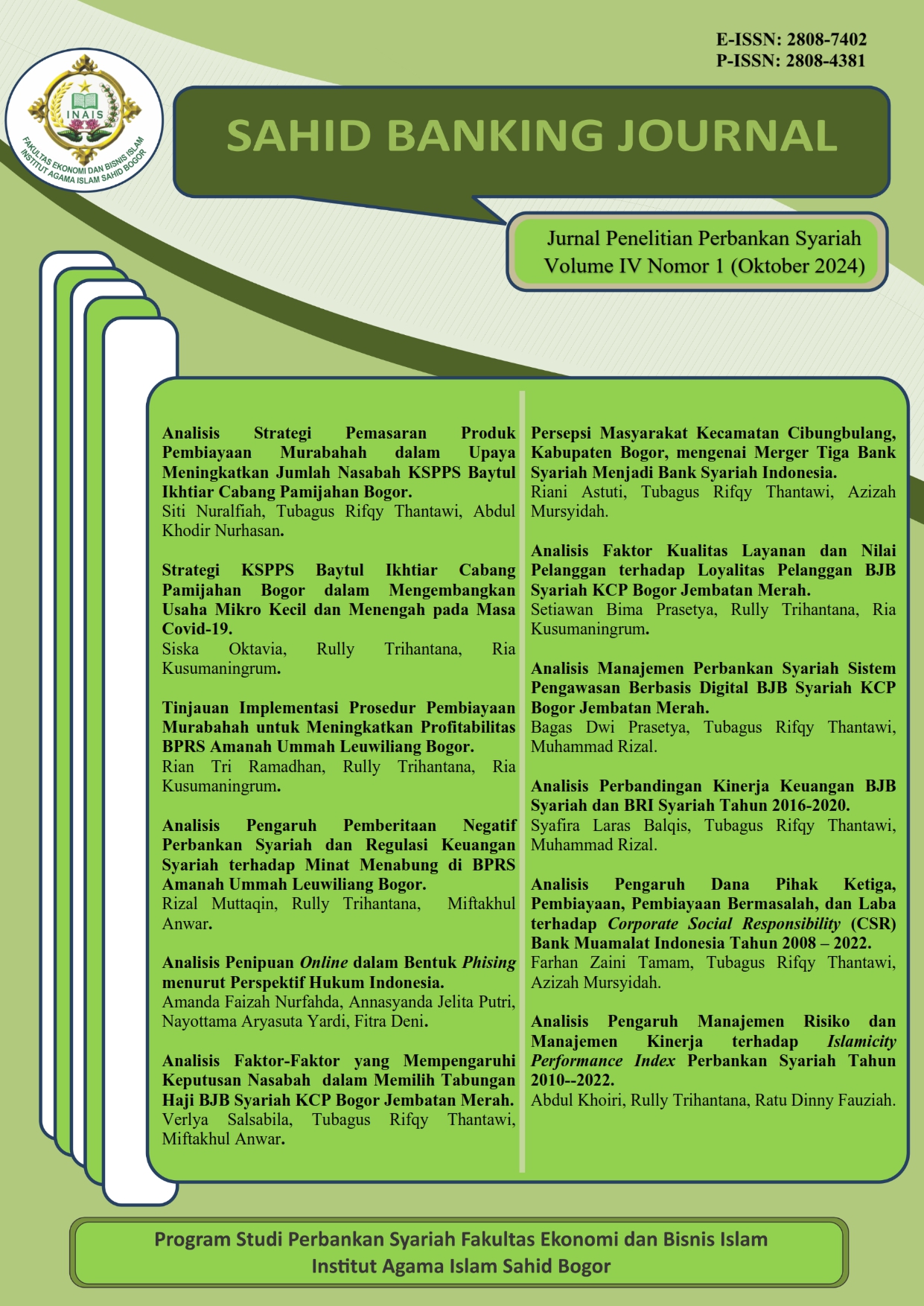ANALYSIS OF ONLINE FRAUD IN THE FORM OF PHISHING FROM AN INDONESIAN LEGAL PERSPECTIVE
DOI:
https://doi.org/10.56406/sahidbankingjournal.v4i1.193Keywords:
Phising, Law, IndonesiaAbstract
The rapid flow of technology has brought so many impacts to various spheres of life, especially the rapid growth in the digital sphere. This technological development also brings a variety of positive contributions. However, along with the benefits, there are also new threats that need to be anticipated. Especially the threat of personal data leakage or misuse of data by irresponsible parties. This paper examines the phenomenon of cybercrime in the form of phishing from the perspective of Indonesian law. This paper uses normative juridical research methods. The researcher proves that phishing crime is a threat to the flow of digital development in Indonesia. Phishing crime no longer relies on one pattern, but comes in various motives and methods. Despite its various challenges and limitations, Indonesian law has been able to create a set of rules to tackle and anticipate phishing crimes.
References
Laporan aktivitas phishing domain. (2023). Retrieved July 7, 2024, from https://api.idadx.id/documents/uploads/1705892888_Laporan%20Q4%202023.pdf.pdf.
Iskandar, O. (2024). Analisis Kejahatan Online Phising pada Masyarakat. Leuser: Jurnal Hukum Nusantara.
Khonji, M., Iraqi, Y., & Jones, A. (2013). Phishing detection: A literature survey. IEEE Communications Surveys & Tutorials, 15(4), 2091–2121. https://doi.org/10.1109/surv.2013.032213.00009.
Ludl, C., McAllister, S., Kirda, E., & Kruegel, C. (2007). On the effectiveness of techniques to detect phishing sites. In Detection of Intrusions and Malware, and Vulnerability Assessment (pp. 20–39). Berlin, Heidelberg: Springer Berlin Heidelberg. Retrieved from http://dx.doi.org/10.1007/978-3-540-73614-1_2.
Malunsenge, L., Massie, C., & Rorie, R. (2022). Penegakan Hukum terhadap Pelaku dan Korban Tindak Pidana Cyber Crime Berbentuk Phising di Indonesia.
Muhammad, F. E., & Harefa, B. (2023). Pengaturan Tindak Pidana Bagi Pelaku Penipuan Phisning Berbasis web. JURNAL USM LAW REVIEW, 6(1), 226. https://doi.org/10.26623/julr.v6i1.6649.
Putra Y, V. F. (2021). Modus operandi tindak pidana phising menurut UU ITE. Jurist-Diction, 4(6), 2525. https://doi.org/10.20473/jd.v4i6.31857.
Rizal, M. S. (2019). Perbandingan Perlindungan Data Pribadi Indonesia dan Malaysia. Jurnal Cakrawala Hukum, 10(2). https://doi.org/10.26905/idjch.v10i2.3349.
Soekanto, Soerjono, Mamudji, & Sri. (2009). Penelitian Hukum Normatif..
Sutarli, A. F., & Kurniawan, S. (2023). Peranan Pemerintah Melalui Undang-Undang Perlindungan Data Pribadi dalam Menanggulangi Phising di Indonesia. Innovative: Journal Of Social Science Research, 3(2). https://doi.org/10.31004/innovative.v3i2.
Tyas Darmaningrat, E. W., Noor Ali, A. H., Herdiyanti, A., Subriadi, A. P., Muqtadiroh, F. A., Astuti, H. M., & Susanto, T. D. (2022). Sosialisasi Bahaya dan Upaya Pencegahan Social Engineering untuk Meningkatkan Kesadaran Masyarakat tentang Keamanan Informasi. Sewagati, 6(2). https://doi.org/10.12962/j26139960.v6i2.92.
Yuniarti, S. (2019). PERLINDUNGAN HUKUM DATA PRIBADI DI INDONESIA. Business Economic, Communication, and Social Sciences (BECOSS) Journal, 1(1), 147–154. https://doi.org/10.21512/becossjournal.v1i1.6030.
Downloads
Published
How to Cite
Issue
Section
License
Copyright (c) 2024 Amanda Faizah Nurfahda, Annasyanda Jelita Putri, Nayottama Aryasuta Yardi, Fitra Deni

This work is licensed under a Creative Commons Attribution 4.0 International License.





















